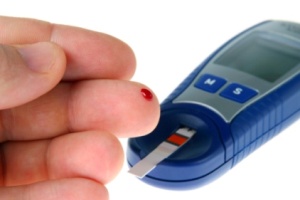 Death rates for people with diabetes dropped substantially from 1997 to 2006, especially deaths related to heart disease and stroke, according to researchers at the Centers for Disease Control and Prevention and the National Institutes of Health.
Death rates for people with diabetes dropped substantially from 1997 to 2006, especially deaths related to heart disease and stroke, according to researchers at the Centers for Disease Control and Prevention and the National Institutes of Health.
Deaths from all causes declined by 23 percent, and deaths related to heart disease and stroke dropped by 40 percent, according to the study published today in the journal Diabetes Care. Although adults with diabetes still are more likely to die younger than those who do not have the disease, the gap is narrowing.
Improved medical treatment for cardiovascular disease, better management of diabetes, and some healthy lifestyle changes contributed to the decline. People with diabetes were less likely to smoke and more likely to be physically active than in the past. Better control of high blood pressure and high cholesterol also may have contributed to improved health. However, obesity levels among people with diabetes continued to increase.
“Taking care of your heart through healthy lifestyle choices is making a difference, but Americans continue to die from a disease that can be prevented,” said Ann Albright, Ph.D., R.D., director of CDC’s Division of Diabetes Translation. “Although the cardiovascular disease death rate for people with diabetes has dropped, it is still twice as high as for adults without diabetes.”
Previous studies have found that rates of heart disease and stroke are declining for all U.S. adults. Those rates are dropping faster for people with diabetes compared to adults without diabetes. Recent CDC studies also have found declining rates of kidney failure, amputation of feet and legs, and hospitalization for heart disease and stroke among people with diabetes.
Because people with diabetes are living longer and the rate of new cases being diagnosed is increasing, scientists expect the total number of people with the disease will continue to rise. The number of Americans diagnosed with diabetes has more than tripled since 1980, primarily due to type 2 diabetes, which is closely linked to a rise in obesity, inactivity and older age. CDC estimates that 25.8 million Americans have diabetes, and 7 million of them do not know they have the disease.
The CDC’s National Diabetes Prevention Program supports lifestyle-change classes for overweight or obese people at high risk of developing type 2 diabetes.
Controlling levels of blood sugar (glucose), cholesterol and blood pressure helps people with diabetes reduce the chance of developing serious complications, including heart disease, stroke, blindness and kidney disease.
For information about diabetes visit www.YourDiabetesInfo.org



